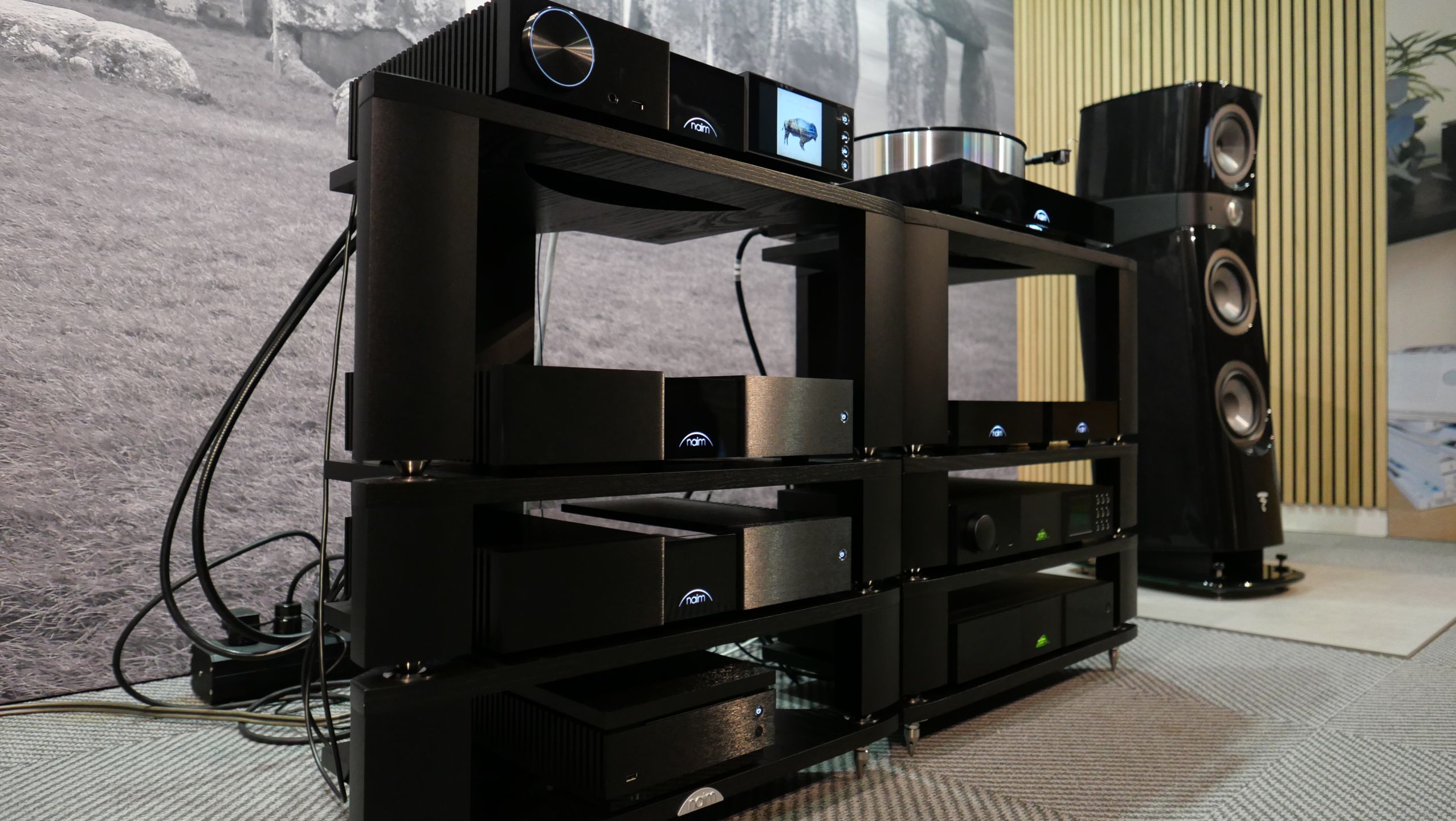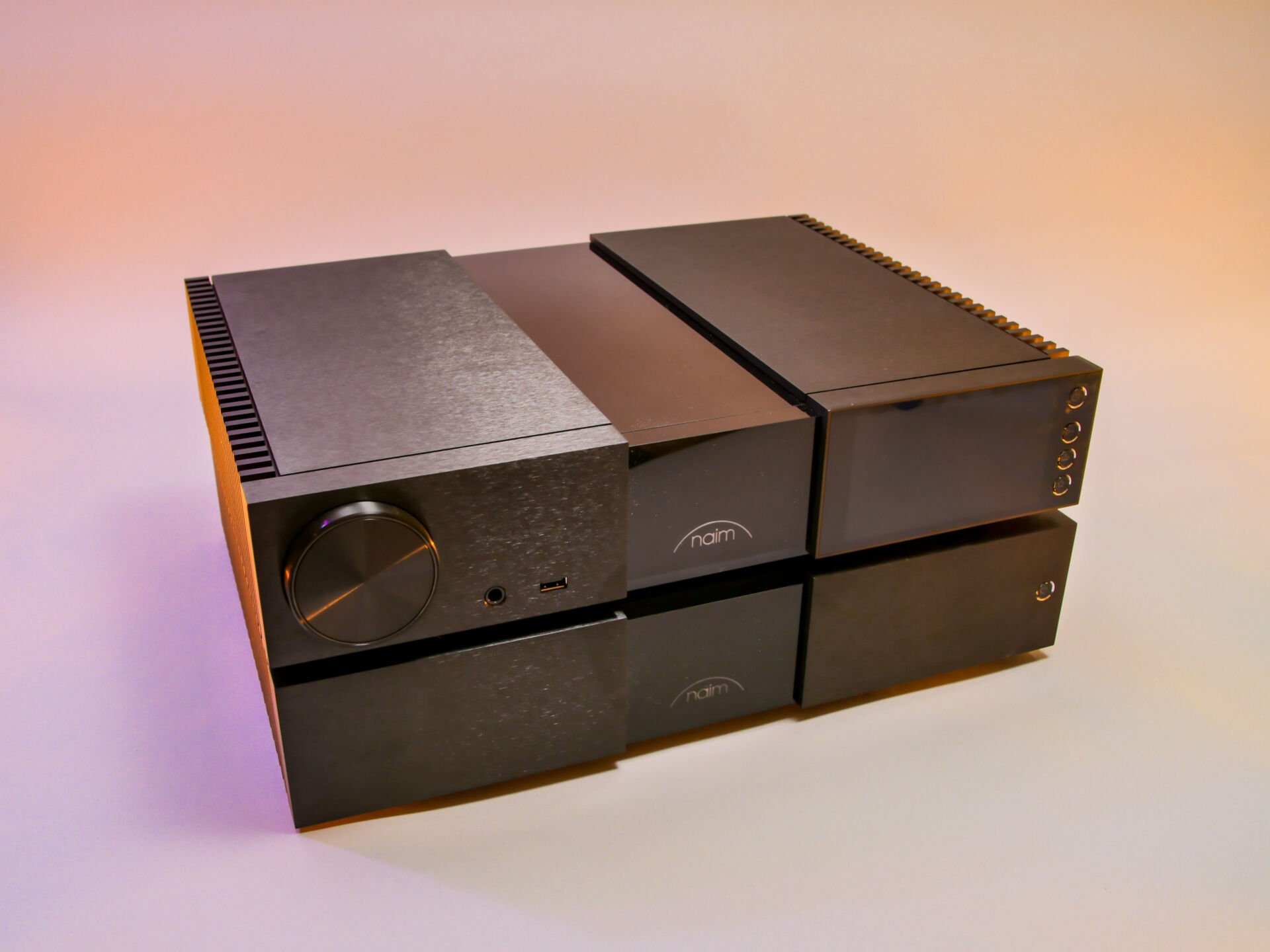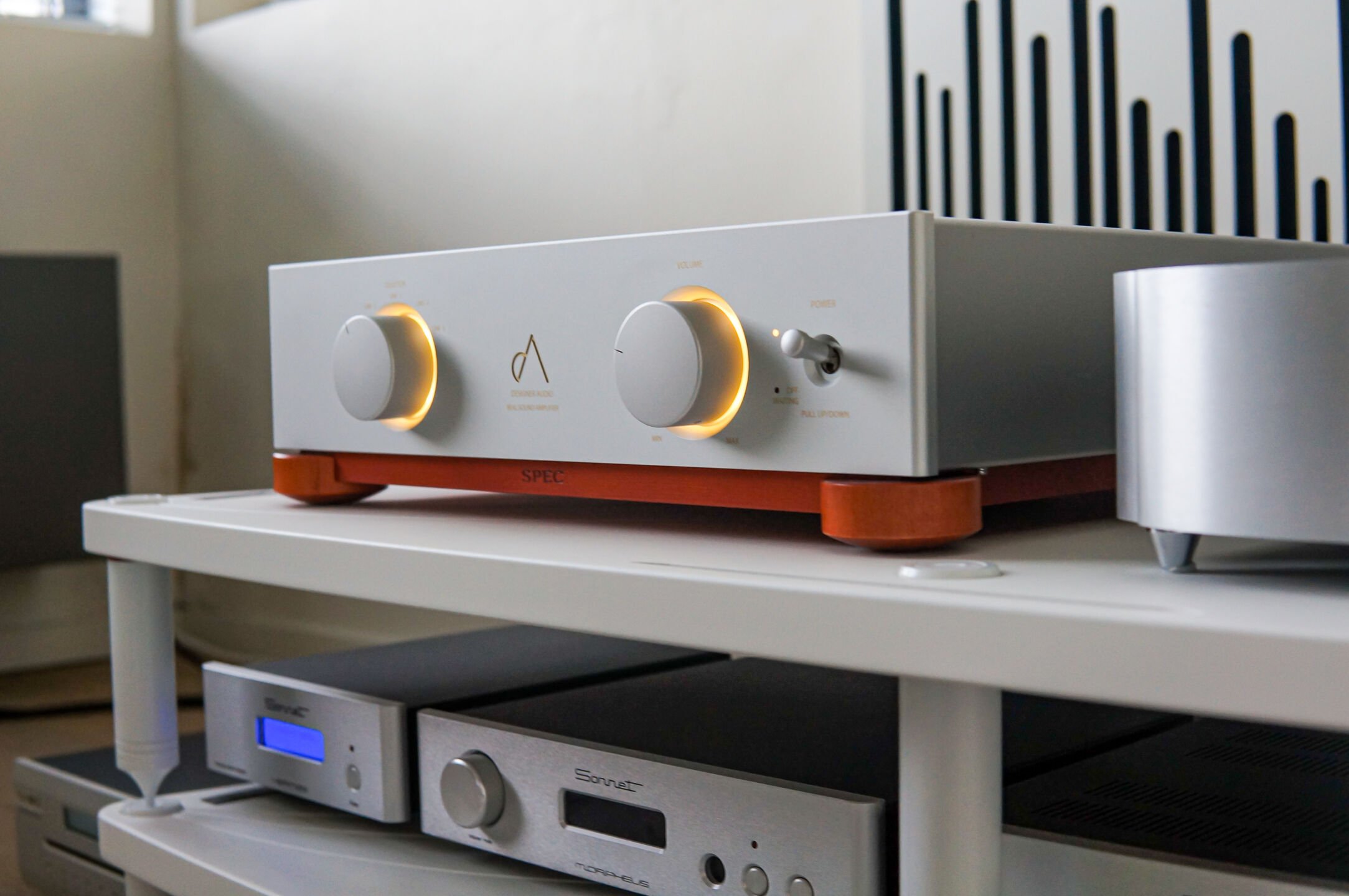

Recently, Naim introduced the new 200 series. We were fortunate to be able to attend both one of the introduction presentations as well as a tech-talk at Latham’s office itself. Your luck: we videotaped the presentation, so you can also see a brief summary. Or you can listen to it. It is Dutch though, so you might want to activate auto-translation in Youtube :-).
Interestingly, Rowan Dernee of Latham audio reports that the new 200 series is actually long overdue. In fact, we didn’t feel at all that the previous series was already obsolete. It sounds just fine – very Naim – and, in fact, just keeps coming along. About the performance of the new 200-series, we can be brief: the demo in Alphen shows – fortunately – that a big step has been made. More about that later.
New Naim 200 series
There are three new products we get to see: the NSC 222, NAP 250 and NPX 300. The NSC is an integrated pre-amp with dac and streamer. In terms of functionality, it is not very different from the 272. We see high-res streaming, Qobuz, Tidal, Spotify connect, Chromecast, Airplay and, for example, multi-room audio. According to Naim, the streaming board is similar to the other modern models, including the 555.
In terms of analog inputs, we do see a lot of difference, because although there is still a DIN connection, Naim has tacked on XLR inputs. But Naim wouldn’t be Naim if they didn’t do things slightly differently. Instead of a + (live, non-inverted), ground and return (inverted), Naim works with a principle called balanced impedance.
In a pseudo-balanced or balanced impedance system, the live pin has normal signal, but the return does not. However, the return does have equal output impedance. Since the output impedance is equal, the absorption of distortion is also equal. And then eliminating distortion / noise should also work equally. So, according to Naim, the benefits are equal.
Why wouldn’t Naim want to use a full-balanced system? Good question. According to egineers at Naim, a balanced system works beautifully, but the Naim characteristic is partly lost. This has to do with harmonics. With a full balanced system, distortion and noise are neatly eliminated. And also harmonics that do not belong in the music are polished away. However, not all odd harmonics. And that gives a harshness that Naim does not want. Whether this is always the case, we dare not say. This is what we have heard and what is described in the Technical Whitepaper.
Of course, the pseudo-balanced system is only one element. And really only a detail. However, we thought this was a striking detail. It shows how Naim is working to preserve a certain characteristic. And that even today they are still doing things in their own way.
If you want to know what else is new, we refer you to the video in which Rowan covers everything. Including speaker outputs where a slot was made between the + and / – against Henry currents. Another detail … wonderful.
Powerrrr
One of the things Naim continues to lean on is the power supply. Once again, we see a huge power supply in the new models. Both in the 222, the 250 and the 300 there are big torodial transformers. And that pleases us, because the power supply is – we think – crucial. The more we research and measure, the more we find out that power is everything. If a power supply is not good, the device cannot perform well. it’s that simple.
In fact, the NPX 300 is the successor to almost all other additional power supplies. And at 7000 euros, it’s a serious upgrade. Fortunately, Naim customers can take it easy: there are adapter cables that allow mixing and matching between the old and new generation.
How does it sound?
We can sum it up very simply: cleaner … it’s really just cleaner. The PRaT has remained, as has the imaging, which is always an important features at Naim. We don’t hear a shred of harshness either. Both at the demo at Wilbert in Utrecht and at Latham itself.
Now the NSC 222 plays fine with the NAP 250. However, when the NPX 300 is connected to it, everything clicks together. This is not subtle. This is just a huge upgrade. There is more roundness in the mid/bass and the imaging brings much more ambience and acoustics. That adds immensely to the experience.
Now this is a hefty upgrade at 7000 euros extra. However, we would definitely save up for it. This is an upgrade that an enthusiast cannot / should not deny himself. And in fact it is quite friendly of Naim to approach it this way: no complete new system is needed. You upgrade your current system where in fact all the characteristics are retained: everything just gets better.
Focal Vestia series
What was also on demo in Alphen was the Focal Vestia series. We had already seen these in Munich last May. The Vestia is “sort of” the successor to the Chora line. The idea, if we look at it this way, is simply to bring a better entry-level speaker. Nicer, better performance and an interesting price tag. If we look at it this way, Focal has taken the untis of the Chora and put them in a nicer cabinet. And well: who is against that?
Looking at it this way, Focal’s plan worked out just fine. We were not really fans of the Chora line. Both the appearance and the reproduction we did not find very interesting. The Vestia is better on all fronts. So we hope to test a pair soon.















